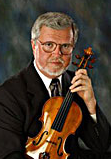Beneficial Tax Treatment for Qualified Performing Artists
The Internal Revenue Service (IRS) has provided that performing artists, if they meet certain requirements, may deduct work-related expenses in a more beneficial manner than other employees. The requirements for a performing artist to be deemed a “qualified performing artist” are fairly simple:
- The performing artist must perform services as an employee in the performing arts for at least two employers during the tax year and receive at least $200 from any two of the employers.
- The performing artist must incur arts-related business expenses of more than 10% of the gross income from performing arts.
- The performing artist must have adjusted gross income of $16,000 or less before deducting performing arts expenses.
The first two requirements are fairly easy to meet for many musicians, but the third requirement may be difficult. Further complicating requirement #3 is that married couples filing a joint return must have no more than a combined $16,000 total adjusted gross income (married couples who choose to file separately and lived together at any time during the tax year cannot file as qualified performing artists). However, independent students working their way through music school by playing in local community orchestras, chamber groups, etc. sometimes meet the above requirements. Frequently, musicians who land their first symphony job and begin in the fall of the calendar year also meet the requirements, assuming they were doing some performing arts work while in school.
The advantage to filing as a qualified performing artist is significant and may result in several hundred dollars of tax savings. Employees, including musicians working in symphony orchestras, deduct their business expenses as miscellaneous itemized deductions on Schedule A. These deductions are subject to a 2% limitation (only deductions in excess of 2% of adjusted gross income may be taken). Further, unless total itemized deductions are greater than the standard deduction ($5000 for a single filer in 2005), no benefit is gained from deducting the business expenses unless the taxpayer is required to itemize deductions. A qualified performing artist deducts his/her expenses directly from total income (no 2% limitation and no ceiling to meet for deductions) and still can either itemize other deductions or take the standard deduction.
William T. Hunt, EA


No comments yet.
Add your comment